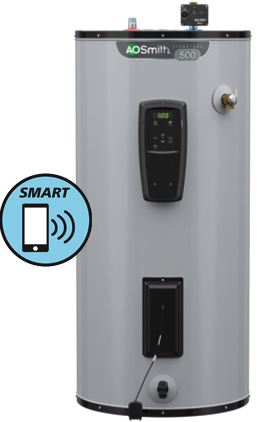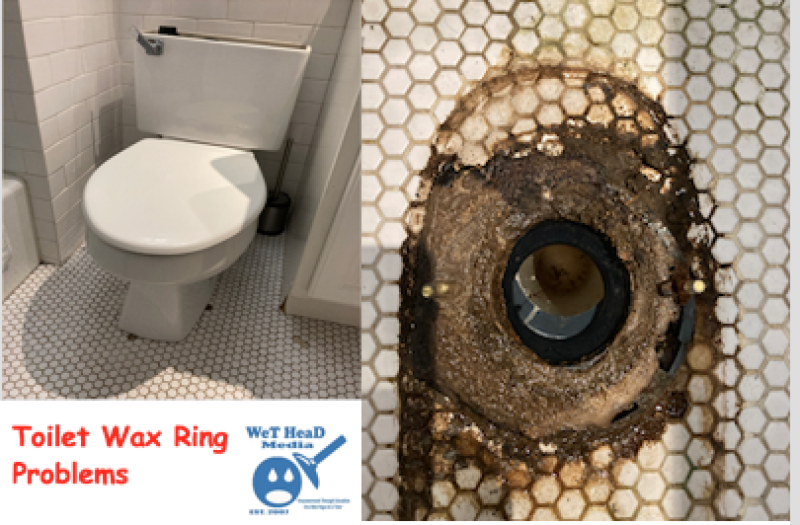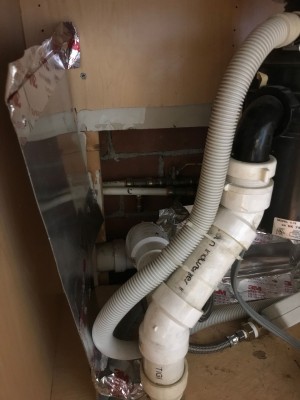How To Work With Copper Tubing
Working with copper tube is something that many plumbers and do it yourselfers do every day. All copper tube used in plumbing water supply lines is “Copper Tube Size” or, “CTS” and comes either in soft copper coils or, in rigid tube with “Type L” commonly used for water supply and “Type M” which is thinner used for heating applications. However, in recent years the usage of “Type M” for water supply has become commonplace in many areas and codes. “CTS” copper always has the same outside diameter for a given tube size so the fittings used are the same size regardless of whether it is soft coil or, the rigid type m & k tubing. 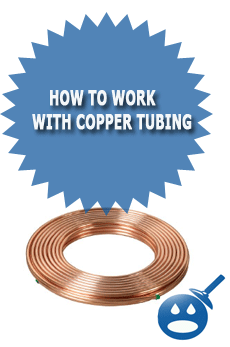
The soft coil may be used underground or above ground and it is preferred any connections be made above ground. Rigid copper is typically used above ground throughout a home as many connections would be required and often brazed joints are required for underground work. Consult your local building inspector for specific code requirements in your area there is no nationwide plumbing code used in the US and requirements vary by state, county, and even the local area.
Whatever type of copper tube you select you will need a copper tubing cutter to cut the tube. Ridgid makes several very good ones such as the model 10 & 15 that work very well and are the choice of many pros. For cutting in tight spots the Ridgid model #’s 101, 117 and 118 cutters are good choices. You place the cutter on the copper tube then turn the screw bringing the cutter wheel tight against the tubing where you want to make the cut. Do not over tighten the screw as it will make a large burr on the inside of the copper which can increase the failure rate of copper by causing turbulence inside the tube with water flowing which can erode the copper. Turn the cutter around the tube several times cutting a single groove in the tubing. Tighten the thumbscrew and turn the cutter several times again repeating until the cut is finished. Once the cut is completed deburr the inside of the cut with the deburring blade built into the Ridgid #10 & 15 tubing cutter.
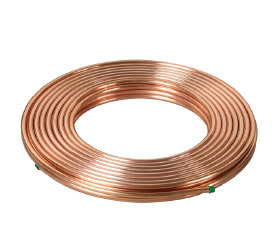
Once the copper tube is cut you will need to select a way of connecting the tubing. The most popular way of connecting copper tube 1/2″ and above is by sweating the connections. This involves cleaning the connections with plumber’s cloth or, emery cloth then applying water-soluble flux to the connection, heating it with a torch, and flowing lead-free solder into the joint. This is called sweating and requires a knack for doing it properly. It is probably best to read a good article on how to sweat copper tube such as “How To Sweat A Copper Pipe” here on Wet Head Media then get a lot of practice before even attempting to sweat pipe in your home. The best starting project would be one in a wide-open area where torch control and fires are not an issue until your skills increase. Making your first sweat joints in tight quarters that are later going to be covered with wallboard is a recipe for disaster both from fires and leaks.
Another popular way of joining copper tubing both soft and rigid is to use compression fittings however, using compression fittings in concealed locations such as ceilings and walls is not allowed by code. Compression fittings are typically used even by people who know how to sweat copper on smaller diameter lines such as 3/8″ tubing feeding dishwashers, toilets, and faucets or, 1/4″ feeding icemakers, water filters, and point of use hot water dispensers. A compression fitting consists of the body, a brass ferrule when used on copper and a nut. The copper tube is inserted through the nut and ferrule, and then placed into the body and the nut is tightened. I usually rub a little grease on the threads of the body to aid in the tightening process and later removal. Be careful not to over tighten the connection over crimping the ferrule on the tube or, it will cause the connection to leak.
Another method used to join copper larger than 1/2″ is to use push in connectors such as SharkBite fittings. Using SharkBite fittings is allowed in concealed locations inside ceilings, walls, and even underground. The tube is cut, deburred using a special tool, which deburrs the outside to prevent damage to the o-ring in the shark bite and also marked using the same deburring tool. The tube is then pushed into the SharkBite connector to the mark and the connection is complete. SharkBite connections can later be taken apart by using a special tool or, even an adjustable wrench tightened against the copper tube to depress the locking collar of the SharkBite connector allowing the tube to slide out. SharkBites can also be used to connect CPVC and PEX tubing.

